
Background information
Netflix, Prime and Co.: pure evil?
by Luca Fontana

When Netflix founder Reed Hastings offered Blockbuster Video his company for 50 million dollars, he was laughed at. And Antioco, the CEO of Blockbuster, made the worst business decision of his life
40 dollars. That was the amount owed for the late return of an «Apollo 13» DVD.
Reed Hastings, still oblivious of the fact that he would go on to found Netflix, is not even thinking about paying the fine he owes the DVD rental service Blockbuster Video. After all, the ridiculously high price is not his fault but that of Blockbuster’s excessively restrictive procedure. And besides, what would his wife say?
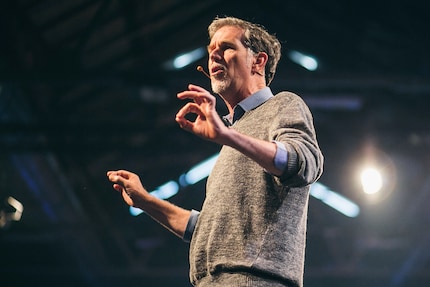
Unbeknownst to anyone at the time: this fine would change the video rental business forever. It was the flap of the butterfly’s wings that turned into a hurricane – in the shape of the worst business decision in history.
For Blockbuster Video, that is.
In 1997, Blockbuster Video is the largest video rental store in the world. Counting around 5,000 branches in the US and 3,000 outside of the US. The rental service employs 84,300 employees worldwide; 58,500 of them in the US alone. In its heyday, the company was worth around five billion dollars.
But 37-year-old Hastings couldn’t care less about all that as he gets into the car of his friend and entrepreneur Marc Randolph on an afternoon in July. He’s worked up about that 40 dollar fine. It’s annoying. And unfair. During their 45-minute drive from Santa Cruz, California, to Silicon Valley, the two of them brainstorm. As they often do.
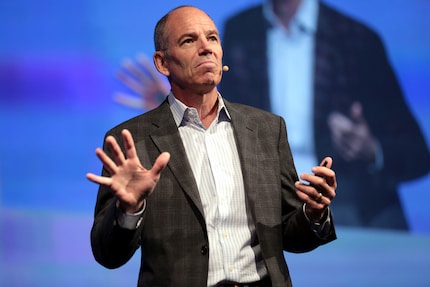
The men know each other because Hastings is the director of software company Pure Atria at the time. Randolph is employed as head of marketing after Hastings bought his former company QA Software. From that day forward, they drive to work together every day and work on new ideas.
But this drive is different. Meanwhile, they’ve been on the road for one-and-a-half hours. State Route 17 is coming to a standstill. That leaves plenty of time to make history.
«Marc, do you think it would be possible to send DVDs by post without breaking them?»
Hastings and Randolph don’t hesitate. Convinced that they’ll do a better job than the multi-billion enterprise that is Blockbuster, they set up their first startup company with a seed capital of 2.5 million dollars.
Netflix is born.
Their advantage over Blockbuster Video: the Internet. Hence the name «Net» for Internet and «flix» for flicks or movies.
Their business model is simple. Customers select the movies they want on the Netflix homepage, pay per movie and have the DVDs delivered to their home by mail. No need to go to the rental store. No need to look for the DVD. No disappointment if somebody else has already rented it. Clever. The red envelopes used to send the DVDs are still reflected in Netflix’s look today.
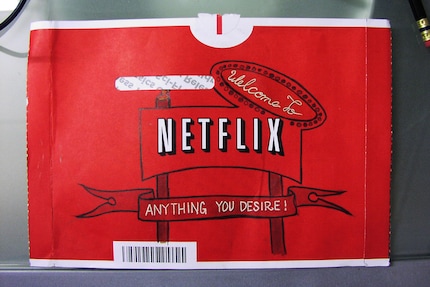
To start with, the library located at the Netflix headquarters in Los Gatos comprises 900 films. Two years later, the number has risen to 3,100. Hastings and Rudolph have a smart approach: they negotiate exclusive rental rights on old but popular movies and on classic series, which are almost impossible to find in video rental shops. Like «Twin Peaks», for example.
Next up is a subscription. For 22 dollars a month, customers can rent as many movies for as long as they want – no fees for late returns. Hastings is all about convenience. One year later, they switch to a subscription-only model: renting movies without being a member is no longer possible.
The startup company is growing and has sparked peoples’ attention. Before too long, Netflix is no longer a small fish in the rental business.
There’s a smell of change in the air.
The progress the internet has brought to the world has triggered a state of euphoria. Risks are taken. Investors make gullible decisions. Every dot-com business will be worth billions. No doubt.
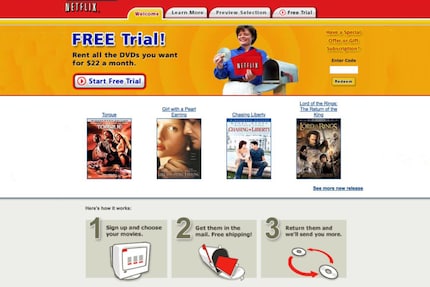
But with each dot-com turned multi-billion enterprise, such as Amazon or eBay, come hundreds of others that fail – take Pets.com or Kozmo, to name but a few.
In March 2000, the dot-com house of cards collapses. Billionaires go from riches to rags. Investors lose stupid amounts. And throw everything overboard that isn’t nailed down. The market collapses. The economy is bleeding. And so is the country. The whole world in fact. 1.7 trillion dollars, CNN estimates. And in the middle of it all, a startup built on red envelopes is heading for a minus of 50 million dollars.
Netflix has reached the end of the road.
In September 2000, Hastings and Randolph see only one way out of the mess they’re in. That way leads them to Dallas, Texas.
Home of their nemesis. Blockbuster Video.
It’s rush hour. A taxi picks up Hastings and Rudolph from the bottom of the aeroplane’s stairs. The drive to their destination takes forever; they hardly slept on the plane. «This is it. The Renaissance Tower», says the taxi driver whilst dropping the men off in front of a glass tower that seems to be growing straight out of the pavement, «one of the tallest buildings in town. And quite possibly the most expensive one, too.»
Hastings and Randolph look at each other one last time before entering the tower of glass and steel. High above, on the 23. floor, towers the office of John Antioco, Blockbusters’s CEO.
This is where business is done.
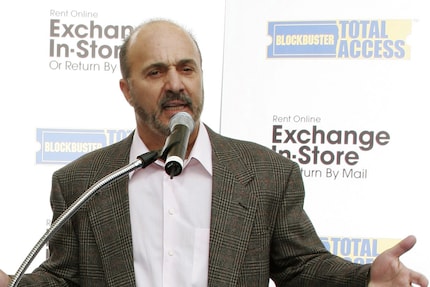
John Antioco looks relaxed and leans back. His leather armchair is cushioned. He’s not wearing a suit but his shoes look like they probably cost more than a car. He exudes nonchalance and is in high spirits. After all, he, John Antioco, just lead Blockbuster Video out of a financial crisis. If anybody knows how to get a struggling company back on track, it’s him, John Antioco. And if Hastings and Randolph, two nobodies, have something to say, it had better be good. Because he, John Antioco, is willing to listen.
«Blockbuster has some tremendous attributes. A network of company-owned and franchised stores in thousands of locations, tens of thousands of dedicated employees, and a passionate user base consisting of nearly 20 million active members,» Hastings starts his carefully crafted pitch. Hastings is good. To the point. Flattering. He tactfully leaves out the part about how many of those users actually hated the service. Antioco should buy Netflix and integrate it into the structures of Blockbuster Video. At least that’s the survival plan.
Hastings picks up speed. «But there are certainly areas where Blockbuster could use the expertise and market position that Netflix has obtained to position itself more strongly.» Particularly in the online field.» Hastings belonged in that room, and he knew it. «We will find the synergies that come from the combination, and it will truly be a case of the whole being greater than the sum of its parts».
And then: «We should join forces.»
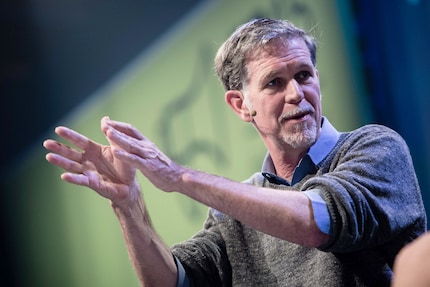
Financially speaking, Blockbuster does not need Netflix. Despite its abysmal reputation. Hastings and Randolph are very much aware of that. But Blockbuster Video is faced with an even greater problem: progress. For the world is going online. Regardless of the dot-com bubble. Not only is Blockbuster Video in a bad position to take advantage of this trend, John Antioco seems oblivious to it.
Hastings and Randolph want to close that gap. They may not have any money. But they have the future. Maybe.
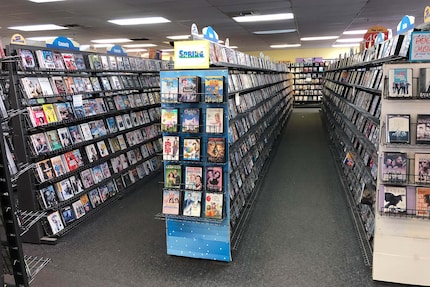
The Blockbuster CEO remains silent. He, John Antioco, keeps the two men in suspense. «If we were to buy Netflix,» the saviour of a company finally utters, «what are you thinking? I mean, a number. What are we talking about here?»
It’s a second that feels like an hour. Hastings and Rudolph exchange nervous glances. «We’ve taken a look at recent comparables,» Randolph says before rattling off a ton of numbers and business analyses. Hastings starts to fidget.
«Fifty million dollars,» he finally interrupts.
Over the years, managers pick up a few tricks. John Antioco, CEO of the world’s largest video rental service knows them all: lean in, make eye contact, nod slowly, frame questions in a way that makes it clear that he, John Antioco, is listening. But now that Hastings has named a number, there was something new in the way the Blockbuster visionary was looking at them. It wasn’t a trick, but his earnest expression slightly unbalanced. By a turning up at the corner of his mouth. It was tiny. Involuntarily. And vanished almost immediately.
Antioco was struggling not to laugh.
Five minutes later, the meeting was over. Blockbuster is not interested in Netflix.
«Well. Shit,» Randolph says, sarcastically raising a plastic cup on their flight back. Hastings smiles. Actually smiling and not hiding it.
«So it’s obvious what we have to do now,» he says. «It looks like we’re going to have to kick Blockbuster’s ass.»
It was going to be a squeeze. Although Netflix already had an impressive 600,000 subscribers and reported sales of 30 million dollars back in March 2001, they were also faced with a quarterly loss of 4.5 million dollars That was already less than the previous year. But still too much. Barry McCarthy, Netflix’s CFO and famous for his financial tricks, wanted to know how long the Californian company could keep its head above water and did the numbers. A few months at most. That’s as much breathing space as he can give them.
But Hastings is not about to give up. Together with his IT expert, he creates the boot that will kick Blockbuster Video’s ass: Cinematch Ranking, an algorithm that personalises movie suggestions. It basically works with three sets of data:
This teaches Cinematch what Netflix subscribers like and dislike. And results in surprisingly accurate movie suggestions. The algorithm also takes availability of the distributors into account. In other words, nothing is suggested that isn’t available. The subscribers love it: no more wasting time watching bad movies or looking for good ones. On the other hand, sceptics are saying that Netflix is controlling who gets to watch what and when.
The Cinematch ranking is soon followed by the second boot: the watchlist. It lets subscribers tag and automatically rent a movie as soon as their previous rentals have been returned to the distribution centre. At the time, there is no other DVD rental company as efficient as Netflix.

It’s a rainy afternoon in June 2003. Hastings is struggling with a dodgy umbrella. And curses. He’s just been to the Netflix distribution centre in Phoenix, Arizona. Goddamn umbrella! His BlackBerry rings. It’s a message. The sender is Marc Randolph.
«Reed, Netflix has cracked the one million subscriber mark! We’re in the black – finally!»
Netflix is out of the woods. Hastings couldn’t care less about the umbrella. He walks through the rain, soaked to the skin but feeling amazing. It’s one of those magical walks he will remember for the rest of his life.
Netflix is growing. At the end of 2005, the Californian company has 4 .2 million subscribers. In 2006, annual profits of 80 million dollars are reported. Everything is going great. But one person in the house of red envelopes is worried: Hastings foresees the demise of physical data carriers. Before anyone else does. A new business model is needed.
In late 2007, Hastings makes a decision: he introduces streaming. Without compromising.
When they joined forces with the postal service, Netflix eliminated going to movie rental stores. Now, they were in a race against time. Their aim was to bring the time from ordering to watching a movie down to zero minutes. Not everyone is happy about this development. Internet streaming is lousy back in 2007. The quality is much lower than DVD. And streaming only works on a PC. Only with Microsoft Windows. Only with Internet Explorer. Nobody was excited about that kind of service.
However, should Hastings prove right, he is holding the key to the future in his hands.
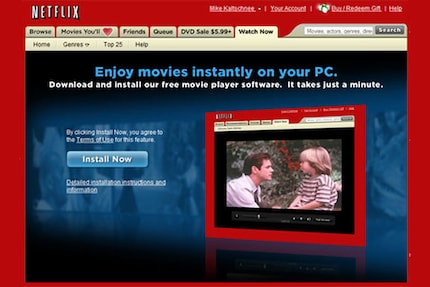
Between 2007 and 2010, Netflix announces partnerships with Microsoft, Sony and Apple. This makes the Netflix app available on consoles, mobile phones and tablets. In 2010, Nintendo gets on board. At the same time, Netflix is investing millions in improving their streaming quality – 40 million in 2007 alone. And it pays off: at the end of 2011, Netflix has over 20 million members.
That’s not just a number. They’re the same 20 million Blockbuster Video had when company-saving visionary Antioco welcomed the Netflix founders into his office on the 23rd floor of his office in the Renaissance Towers ten years previously. And laughed at them.
«Well. Shit,» says Antioco wearily.
He’s not laughing anymore. Netflix has just won the battle.
His ass has been kicked.
At the same time, DVD sales are dwindling. As predicted, the data carrier is slowly becoming extinct. At least in the entertainment business. The streaming boom kick-started by Netflix is definitely partially to blame.
This development really hits Blockbuster. The company declares bankruptcy in 2010. Thousands of stores are shut down in the years to follow. Even more people lose their jobs. In 2012, while Netflix starts producing its own content, such as «House of Cards», Blockbuster is struggling to put one foot in front of the other.
The giant is staggering. And comes crashing to the ground in 2014.
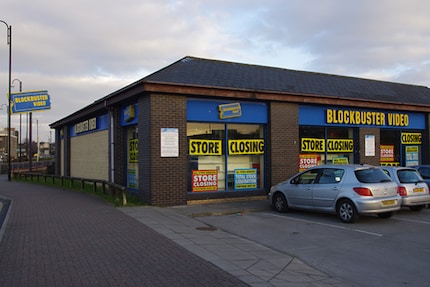
As the last Blockbuster Video store closes, Netflix has over 50 million active members. Fast forward four years and the streaming giant has become the sixth largest internet company of all time – with an annual turnover of 11,69 billion dollars and 139 million subscribers. Blockbuster Video is history.
All because of 40 dollars.
image above: Wikimedia Commons / CC BY-SA 2.0
I write about technology as if it were cinema, and about films as if they were real life. Between bits and blockbusters, I’m after stories that move people, not just generate clicks. And yes – sometimes I listen to film scores louder than I probably should.
Interesting facts about products, behind-the-scenes looks at manufacturers and deep-dives on interesting people.
Show all